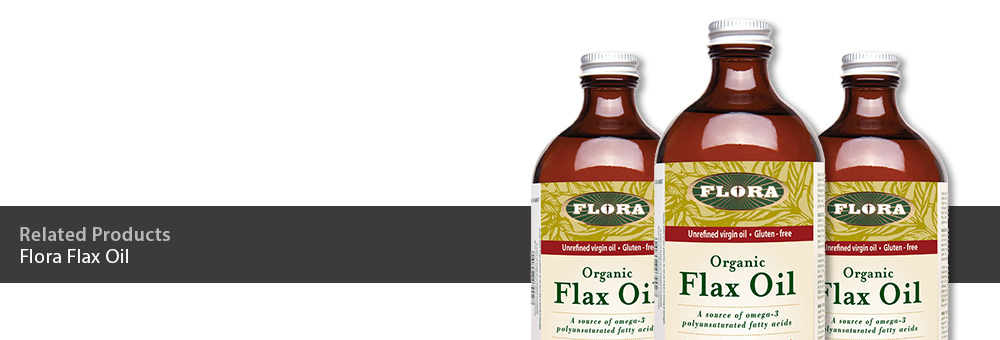

Flaxseed oil for good health
Flaxseed has a long history, both in the Ancient Near East and Asia. Flax has been used internally as an aid in digestive ailments, such as constipation, and externally, as a poultice for inflammation and as fabric for clothing. The French king Charlemagne thought so highly of flax that he passed a law requiring his subjects to eat flaxseed for their health.
Today, flax is a major cash crop in Canada. In 2009-2010, Canada produced just over 930,000 tonnes of flax and averages around 750,000 each year. China, the EU and the US are the major buyers of Canadian flax. Why has it become such a popular commodity? Flax seed is a precious source of omega-3 and omega-6 essential fatty acids (EFAs). EFAs are essential nutrients that our bodies cannot make on their own and must be sourced from the diet. EFAs play an important role as building blocks for cells throughout the body and are especially important for skin, brain, heart, and immune health. Sources of omega-3 are relatively scarce compared to omega-6, especially for vegans or vegetarians who do not consume fish. Flax contains omega-3 and omega-6 in a ratio of around 5:1 in favour of omega-3. Our typical North American diet can be as high as 32:1 in favour of omega-6 though, due to how common omega-6 oils are. 10ml (2 tsp) of good quality flax oil provides 5g of omega-3. The omega-3 in flax oil is called alpha linolenic acid (ALA); once digested, ALA can be converted to other forms of omega-3, like the DHA and EPA found in fish oil.
Flax oil is a food that supplies large amounts of ALA while fish oil is a supplement that provides smaller amounts of DHA and EPA. All of these omega-3 fatty acids play a role in the body. ALA specifically has been found in studies to benefit cardiovascular health in terms of reducing inflammation, preventing hardening of the arteries, balancing blood pressure, and improving lipid profiles. Research also shows ALA can be converted to EPA at a rate of about 5-10% and DHA at a rate of about 2-5%. This conversion depends on many factors like diet (vegetarians convert better than meat eaters), gender (women convert better than men), genetics and state of health (some health conditions like eczema and diabetes may be linked to lesser conversion). In addition, comparing flax to fish oil, flax of course does not require the same amount of processing as fish oil, is more sustainable long term and isn’t exposed to the same level of oceanic pollutants as fish oil.
Like most oils, flax oil is best taken with food. There are many ways to incorporate it into the diet. However, omega-3s are fragile; heat, light and oxygen can damage them over time. Flax oil should never be used for cooking or frying foods, but it can be added to food just before heating. It should be refrigerated when not being used and generally used up within 8 weeks of opening for optimal freshness. Salads, smoothies, on top of pasta, with rice and vegetable dishes, and with oatmeal, fruit and yogurt are some popular ways to use flax oil with food. It generally has a slightly nutty taste with just a hint of bitterness at the end, which can vary a bit depending on the harvest that year. It’s a very easy and economical way to start getting more healthy omega-3s into your diet, especially for those who don’t eat fish often or at all.
One of the most delicious ways to use Flora’s Organic Flax Oil is by making pesto with it. Pesto can be stored for a week or two and added to foods once they have been removed from the heat source (to preserve the healthful benefits of the oil), such as with grains, steamed vegetables, pastas, etc., or added to dressings, salads, sandwiches, etc.


Flax Oil Pesto
Ingredients:
1 cup walnuts
¼ cup Flora 100% Canadian Organic Flax Oil
¼ cup good olive oil
1 cup packed fresh flat-leaf parsley
1 cup grated parmesan
1 small garlic clove
grated
sea salt and freshly ground pepper, to taste
Instructions:
1. By hand: finely chop walnuts and parsley. Place all ingredients in a small-medium bowl and mix well. By blender: Place all ingredients into blender or food processor and pulse, making sure not to puree the ingredients (you want some texture).
2. Add or mix into food and store leftovers in a well-sealed glass container for refrigeration.
By Robert Dadd
